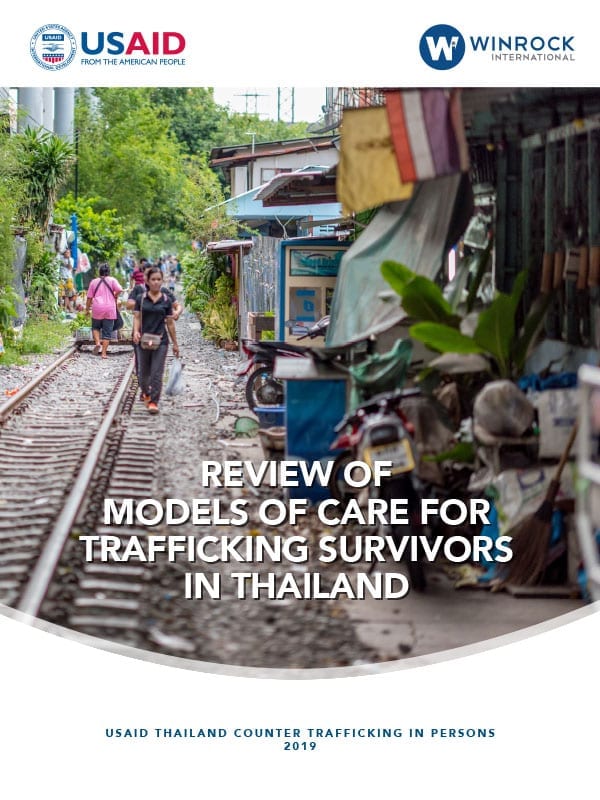
Models of Care for Trafficking Survivors in Thailand
Thailand is a country of origin, destination, and transit for forced labor and human trafficking. While the Royal Thai Government (RTG) has made substantial progress in the fight against trafficking in the last few years, identifying more victims, stream- lining the prosecution of trafficking cases, and making victim assistance programs more tailored to individual needs. The RTG recognizes the need to renew its efforts in several priority areas, including in the investigation of labor trafficking cases, the prosecution of traffickers, and the compensation of victims. Sectors with the highest prevalence of human trafficking include the commercial sex industry and industries such as fishing, seafood processing, poultry farming, agriculture, construction, and garment production.
Migrant workers in the labor sector are particularly vulnerable to human trafficking and forced labor because of factors such as lack of legal status and Thai language skills, poor knowledge of their rights and Thai law, as well as the actions of unscrupulous labor brokers and employers. Shelters are the most widespread model of service provision to address the complex and pressing needs survivors face after their trafficking ordeal. Government shelters are run by MSDHS, which operates 76 short- stay shelters and nine long-term regional trafficking shelters. These shelters offer access to counseling, legal assistance, medical care, financial aid, witness protection, education or vocational trainings, and employment assistance. NGOs also provide parallel shelter services and in 2017, the RTG issued a regulation to contract out shelter provision to NGOs.
The shelter model presents a number of advantages in assisting trafficking survivors. Shelters offer a safe and protected environment in which trafficked persons can begin the recovery process and access a range of services (legal, medical, psychosocial, long-term rehabilitation, etc.) in a single location. From the perspective of the RTG, placing trafficking survivors in shelters also makes it easier for them to participate in the prosecution process. However, as discussed in detail in this study, the shelter model, whether operated by the government or NGOs, also has limitations. Trafficking shelters may restrict survivors’ freedom of communication and mobility, limit their employment opportunities, and often do not provide them with individualized services to meet their needs.
In addition, some shelters often lack well-trained staff working in a collaborative, interdisciplinary manner to provide comprehensive continuous care for victims based on personalized case service plans. To better understand how gaps can be addressed and service delivery can
be improved, this study will assess the strengths and weaknesses of non-governmental shelter models, such as those operated by NGOs, and explore the viability of out-of-shelter community-based models using case studies and best practice models.
read the full report here.
